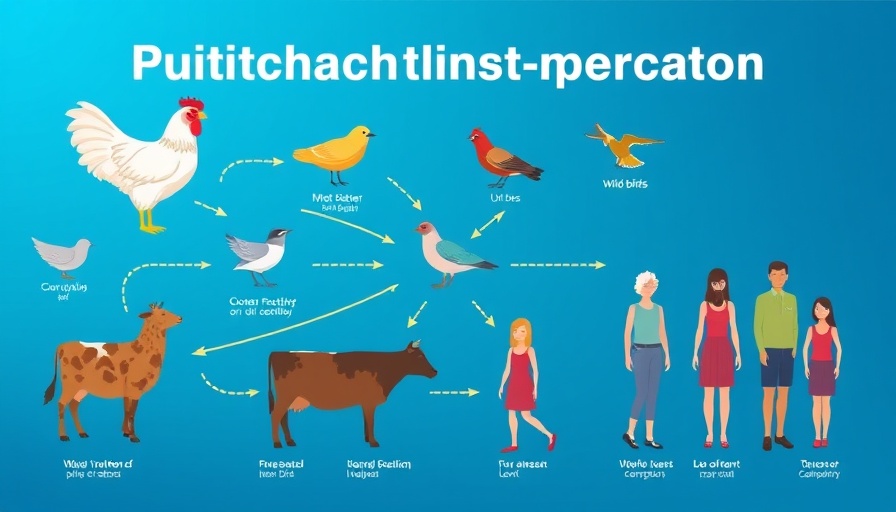
Understanding the Threat of HPAI in Clay County
The recent confirmation of the H5N1 variant of Highly Pathogenic Avian Influenza (HPAI) in neighboring counties has prompted the Clay County Health Department (CCHD) to act decisively. Although no cases have been found directly in Clay County, the potential risk is significant enough to warrant caution. Public Information Officer Christina Carrico emphasized the importance of monitoring and controlling the outbreak, advising local schools to suspend activities involving poultry and similar birds temporarily. This step represents a proactive approach in safeguarding community health.
What is HPAI and How Does it Affect Us?
HPAI is a viral disease primarily affecting birds, particularly wild and domestic poultry. While there are only a few cases of human infection reported in the U.S., it's crucial to avoid complacency. The disease spreads through contaminated environments and direct contact with infected animals. For residents of Clay County, the focus should remain on protecting the local avian population and understanding how the virus operates.
Protecting Public Health: Essential Guidelines
In light of these developments, residents are urged to take several precautionary measures. First and foremost, avoid direct contact with wild birds to minimize exposure risk. Anyone who finds sick or dead birds should refrain from handling them directly; instead, protective gear should be worn, and proper disposal methods followed. Reporting is another critical step—early notification to health authorities can help contain any potential spread. Following guidance from the CCHD, people should maintain vigilance as the situation evolves.
Looking Forward: The Importance of Vigilance and Reporting
The emergence of HPAI highlights the delicate balance between wildlife health and community well-being. Residents are encouraged to stay informed through local health departments and to adhere to guidelines concerning food safety and animal contact. Understanding the signs of HPAI infection in birds—like sudden deaths, respiratory distress, and decreased egg production—can empower residents to take action and preserve their local environments.
In Conclusion: Community Action is Key
As the Clay County Health Department continues to monitor the situation, public cooperation is vital for controlling the potential spread of avian influenza. Residents who wish to ensure their safety and that of their community should remain aware of the guidelines presented by health officials. By staying informed and proactive, Clay County can protect its avian populations and minimize health risks.
 Add Row
Add Row  Add
Add 




 Add Row
Add Row  Add
Add 

Write A Comment